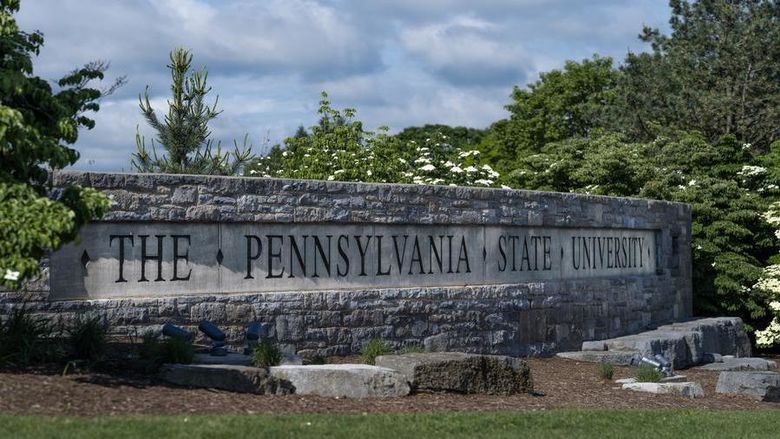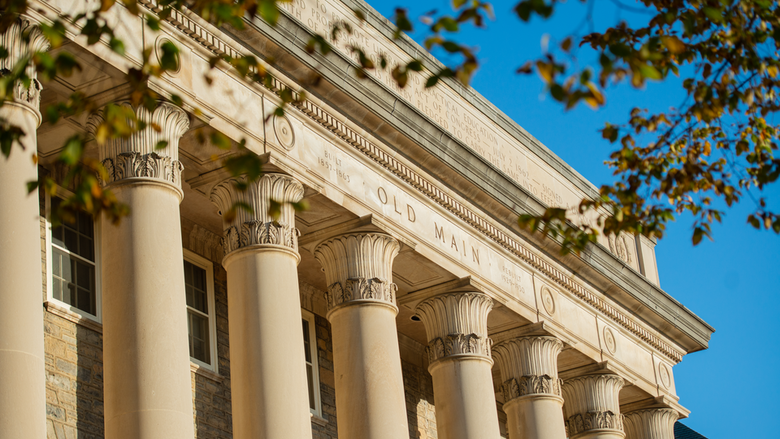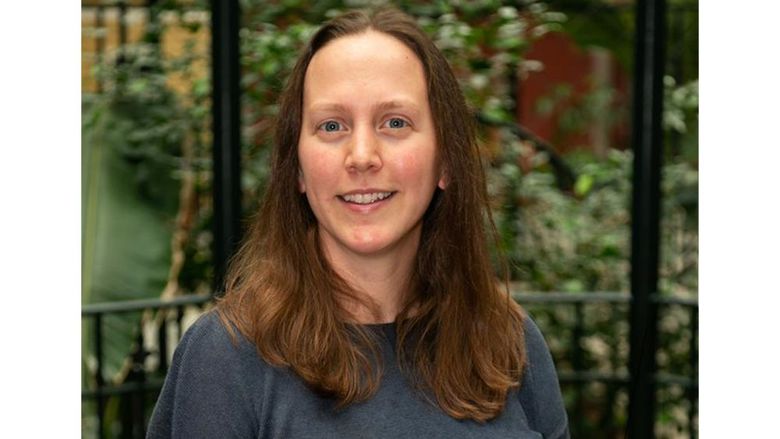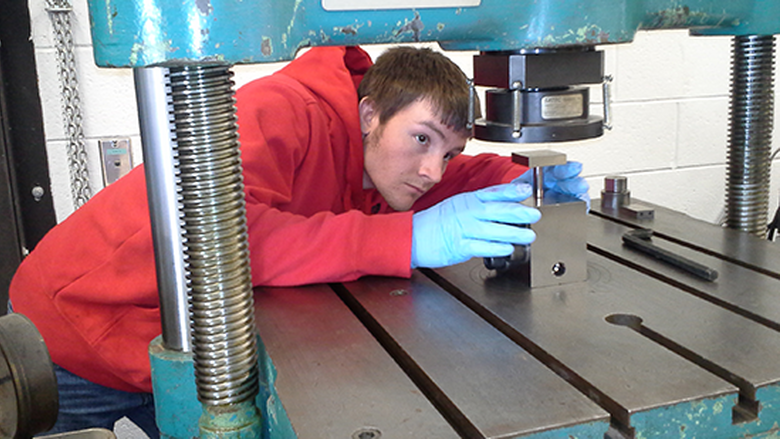
The Institutes of Energy and the Environment has awarded seed grants to 22 groups of interdisciplinary researchers at Penn State for the 2020-21 award cycle.
UNIVERSITY PARK, Pa. — The Institutes of Energy and the Environment (IEE) has awarded seed grants to 22 groups of interdisciplinary researchers at Penn State for the 2020-21 award cycle.
IEE established a Seed Grant Program in 2013 to foster basic and applied research addressing IEE’s research themes. Since then, IEE has awarded grants to more than 148 interdisciplinary projects across 15 Penn State colleges and campuses.
This year, seed grants were awarded to proposals focusing on at least one of IEE’s five strategic research themes — Climate and Ecosystem Change, Health and the Environment, Integrated Energy Systems, Urban Systems, and Water and Biogeochemical Cycles.
“The path to every great discovery or innovation starts with a simple idea, but getting going down that path requires some assistance and time to more fully develop that idea, usually through obtaining preliminary data,” said Bruce Logan, associate director of IEE. “These seed grants will help provide funding to enable the transformation of these new ideas into larger, more comprehensive projects that can address important scientific and engineering needs of the world.”
This year, one project, “Simultaneously Harvesting Cold Universe and Sunlight as Renewable Energy,” was co-funded with the help of the Energy 2100 initiative. The two projects titled “Expanding the Policy Foundation for Electricity Prosumers: Lessons from New York and California”’ and “Overcoming Barriers to Local Governance of Utility-Scale Solar Energy Systems in Pennsylvania and Regionally” were co-funded with the Center for Energy Law and Policy (CELP).
“Achieving our energy goals requires advances in technology, but also the legal and policy environments that encourage the adoption of emerging energy technologies. These innovative and interdisciplinary projects demonstrate the importance of policy evolving alongside technology,” said Seth Blumsack, director of CELP. “They also demonstrate Penn State's ability to harness the unmatched depth and breadth of the University's interdisciplinary expertise to foster energy-focused research collaborations across the University system.”
The 2021 projects — along with their principal investigators, co-investigators and affiliated colleges — that were awarded seed grants are:
Climate and Ecosystem Change
- “Methane Emissions Mitigation and Carbon Capture with Biofiltration” — Juliana Vasco-Correa, College of Agricultural Sciences; Mary Ann Bruns, College of Agricultural Sciences; Lauren Greenlee, College of Engineering
- “Visualizing Cultural Landscapes Under Sea-Level Threat to Improve Equity in Climate Engagement” — Peter Stempel, College of Arts and Architecture; Klaus Keller, College of Earth and Mineral Sciences; Alexander Klippel, College of Earth and Mineral Sciences
- “Farafatse (Givotia madagascariensis) Decline and Livelihood Sustainability in SW Madagascar” — Kristina Douglass, College of the Liberal Arts; Eric Burkhart, College of Agricultural Sciences
- “Coastal Carbon Dynamics in a Riparian Buffer Ecosystem, Lake Erie Basin” — Lisa Ann Emili, Division of Mathematics and Natural Science, Penn State Altoona; Sarah Allen, Penn State Altoona; Anthony Foyle, Penn State Behrend; Lorena Tribe, Penn State Berks
Health and the Environment
- “AESEDA-HBCU Air Quality for Environmental Justice (AQ4EJ) Network” — Gregory Jenkins, College of Earth and Mineral Sciences; Mare Sarr, School of International Affairs
- “Water Quality Assessment of an Urban Watershed in Lancaster, Pa.: Implications for Environmental Justice” — Shirley Clark, School of Science, Engineering, and Technology, Penn State Harrisburg; Christopher Blaszczak-Boxe, College of Earth and Mineral Sciences; William Driscoll, Penn State Harrisburg; Jill Felker, Penn State Berks; Lauren McPhillips, College of Engineering; Faegheh Moazeni, Penn State Harrisburg; Tami Mysliwiec, Penn State Berks; Joseph Spear, Penn State Harrisburg; Hong Wu, College of Arts and Architecture
- “Effects of Biofilms on the Transport of Microplastics” — Margaret Byron, College of Engineering; John Regan, College of Engineering
- “Engaging Underserved Communities in Environmental Assessment for Healthy Living” — Melissa Bopp, College of Health and Human Development; Mallika Bose, College of Arts and Architecture; Louisa Holmes, College of Earth and Mineral Sciences
- “Finding Common Space: Reconciling One Health Socio-Environmental Factors in Pennsylvania” — Stephen Mainzer, College of Arts and Architecture; Leann Andrews, College of Arts and Architecture; Justin Brown, College of Agricultural Sciences; Sona Jasani, Penn State Health
- “Flooding, Hurricane Harvey, and Environmental Justice” — Lilliard Richardson, College of the Liberal Arts; Heather Randell, College of Agricultural Sciences; Pin Sun, College of the Liberal Arts
- “Urban Microclimate, Outdoor Thermal Comfort, and Socio-Economic Mapping: A Case Study of Two High-Density Cities” — Ute Poerschke, College of Arts and Architecture; Guangqing Chi, College of Agricultural Sciences; Farzad Hashemi, College of Arts and Architecture; Lisa Iulo, College of Arts and Architecture
- “Community Engagement and Interdisciplinary Collaboration to Direct Air Quality Research at Industrial Sites near Pittsburgh” — Natasha Miles, College of Earth and Mineral Sciences; Jennifer Baka, College of Earth and Mineral Sciences; Tom Bartnik, Penn State Center Pittsburgh; Kenneth Davis, College of Earth and Mineral Sciences; Lisa Iulo, College of Arts and Architecture; Klaus Keller, College of Earth and Mineral Sciences; Esther Obonyo, College of Engineering; Wei Peng, College of Engineering
- “Assessing Distributional Effects of Coal-Fired Power Plant Operations on Pollution and Health” — Emily Pakhtigian, College of the Liberal Arts; Wei Peng, College of Engineering; Hannah Wiseman, Penn State Law
Integrated Energy Systems
- “Lignin Derived Graphite for Renewable Energy Storage and Transportation Electrification” — Randy Vander Wal, College of Earth and Mineral Sciences; Ramakrishnan Rajagopalan, Penn State DuBois
- “Expanding the Policy Foundation for Electricity Prosumers: Lessons from New York and California” — Hannah Wiseman, Penn State Law; Andrew Kleit, College of Earth and Mineral Sciences
- “Overcoming Barriers to Local Governance of Utility-Scale Solar Energy Systems in Pennsylvania and Regionally” — David Yoxtheimer, College of Earth and Mineral Sciences; Mohamed Badissy, Dickinson Law; Thomas Murphy, Penn State Extension
- “Simultaneously Harvesting Cold Universe and Sunlight as Renewable Energy” — Linxiao Zhu, College of Engineering; Daning Huang, College of Engineering
Urban Systems
- “Energy Retrofit Policy and Programs in Low-Income Housing Markets: Implications for Energy Equity in Cleveland, Ohio” — Emily Rosenman, College of Earth and Mineral Sciences; Esther Obonyo; College of Engineering
- “Development of Innovative Materials and Technology for Cellular Agriculture” — Josephine Wee, College of Agricultural Sciences; Melik Demirel, College of Engineering; Gregory Ziegler, College of Agricultural Sciences
Water and Biogeochemical Cycles
- “Towards Sustainable and Equitable Household Water Security: Lessons from Bangladesh” — Alfonso Mejia, College of Engineering
- “Analyzing the Adoption of Solar Irrigation Pumps in India within the Food-Energy-Water Nexus: Implications for Carbon, Groundwater Depletion, and Agricultural Productivity” — Daniel Brent, College of Agricultural Sciences; Michael Jacobson, College of Agricultural Sciences; Emily Pakhtigian, College of the Liberal Arts
- “Wetland Hydrology and Plant Community Composition – A Reassessment of Site Conditions a Decade Later” — Charles Andrew Cole, College of Arts and Architecture
“Over the years we have seen the new research initiatives nourished by this seed grant program grow into substantial successes,” said Tom Richard, director of IEE. “Prior projects have generated novel solutions to major societal challenges, and resulted in high-impact scholarship, substantial external grants, startup companies and industrial innovation that drive economic development. This current round of seed grants is full of exciting ideas, and I am sure will have a similar positive impact on Pennsylvania and the world.”
The Institutes of Energy and the Environment is one of seven interdisciplinary research institutes at Penn State. The Institutes of Energy and the Environment connects and supports interdisciplinary teams of researchers to solve some of the world’s most difficult energy and environmental challenges.
For more information about the seed grant program or the Institutes of Energy and the Environment, visit iee.psu.edu or email [email protected].





